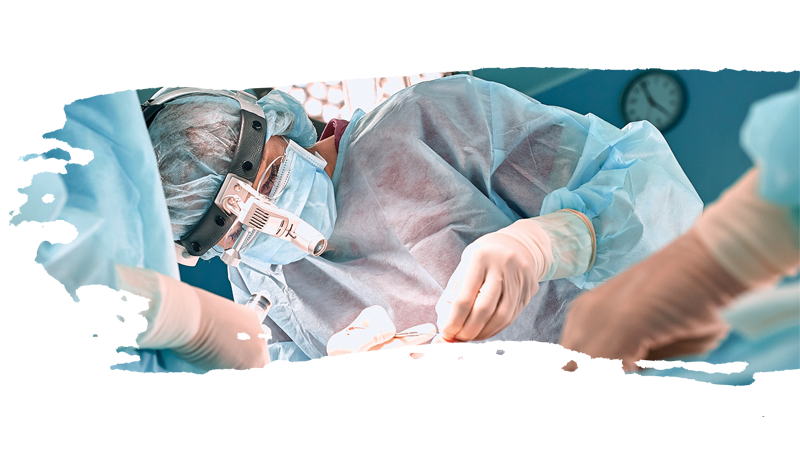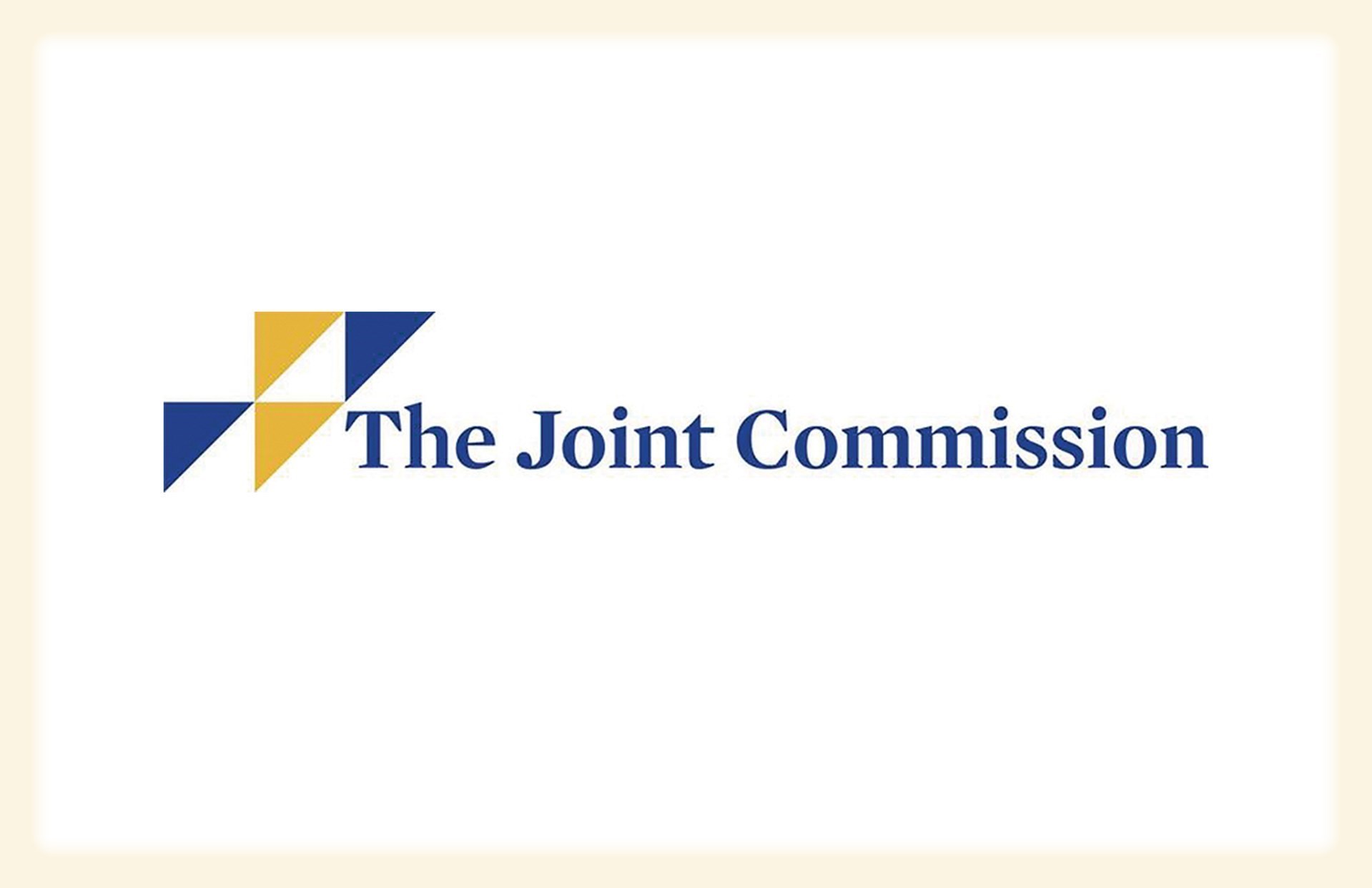What You Need to Know about the ACS QVP*
The development and implementation of the ACS QVP was one of the thematic foci of the conference, and several program experts shared their thoughts on the key elements of the comprehensive QI program.
As discussed by Chelsea Cardell, MD, MS, clinical scholar and resident at Loyola University Medical Center in Maywood, IL, the 12 standards of QVP create a universal framework for ongoing QI in a hospital by using the programmatic standards grouped into four domains: leadership, care, evaluation, and improvement. Leadership focuses on engaging surgical quality and safety staff and creating a culture based on patient safety and high reliability; the care domain standardizes team-based processes in the five phases of care (preoperative, immediate preoperative, intraoperative, postoperative, and postdischarge); the evaluation phase looks at data collection, surveillance, and case and surgeon review; the improvement phase focuses on continuous quality improvement using data and compliance measures.
But what are the specific advantages of participating in the ACS QVP, especially when a hospital may already be participating in other ACS Quality Programs? ACS Regent James W. Fleshman Jr., MD, FACS, FASCRS, chair of surgery, Baylor University Medical Center, Dallas, TX, explained how participating in a QVP pilot site review helped his large health system improve even further.
The initial review revealed “significant opportunities for improvement,” Dr. Fleshman said, noting that, because of the QVP, Baylor was able to construct a mission, vision, values, and strategy for a culture of safety; incorporate residents into the five phases of care touched by continuous QI; get targeted ACS NSQIP (National Surgical Quality Improvement Program) data to surgeons; create a health system science review process; and more. Importantly, Dr. Fleshman noted, “the ACS QVP socializes quality across surgical specialties and across health systems” by providing easily communicated data.
A QI program as comprehensive and thorough as the QVP cannot succeed without buy-in from all necessary parties, ranging from nurses to hospital executive staff, according to Robert J. Winchell, MD, FACS, professor of surgery and chief of trauma, burn, acute and critical care, Weill Cornell Medicine, New York, NY. To get buy-in, Dr. Winchell advised to “start with your core team—the people with the responsibility to pull the initiative off,” including the surgical quality officer (SQO) or QI leader, chair of surgery, or NSQIP champion. The team must be intimately familiar with the QVP and be able to communicate why it is important to a broad range of stakeholders who might not have strong commitments to the ACS or QI. Dr. Winchell summarized how to approach “strong supporters,” “lukewarm defenders,” and even “enemies” who might actively resist the program so that consensus can be reached, and the QI transformation can begin.
Leadership Pearls*
One highlight of the conference was the Leadership Pearls General Session and panel discussion, moderated by Patricia L. Turner, MD, MBA, FACS, ACS Executive Director. In their talks, the three panelists described their leadership philosophies and provided tips on successfully navigating high-level surgical careers. Vivian Gahtan, MD, FACS, chair, department of surgery, Loyola Medicine, Maywood, IL, noted the importance of leading with the team in mind. “Real success is team success,” Dr. Gahtan said. “You need to be a leader who is focused on that—creating good conditions to have your people realize their capacity and power."
To be that leader, Dr. Gahtan suggested preparing by gaining information about the role and the team, setting goals, developing leadership strategies, and setting aside time to develop skills, education, and a portfolio.
Even in difficult team situations, it should be a priority for leaders to keep its members working together. “You do not all need to agree on everything, but everyone should feel like they are being heard,” said Caroline Reinke, MD, FACS, associate professor and quality officer, Atrium Health, Charlotte, NC.
Dr. Reinke suggested that leaders need to balance trust and transparency with their teams and manage conflicting priorities, which can be difficult among the team’s varying responsibilities. However, what does not change is the importance of always making sure to support the team. “No matter what, it’s critical to protect the team, always,” she said.
An important part of becoming a leader is honing your negotiation skills, according to Feibi Zheng, MD, MBA, FACS, assistant professor of surgery at Baylor College of Medicine in Houston, TX. “In your negotiations, listen actively and be genuinely curious about what your partner is saying,” Dr. Zheng said.
In situations where emotions can flare, “make sure to acknowledge that emotion and not ignore it.” By approaching your counterpart in a spirit of cooperation, Dr. Zheng said that all parties are better equipped to get what they want.
After their talks, Dr. Turner led a Q&A in which she asked the panelists how they generate team buy-in with high-level organizational decisions that they may not be happy with, navigating culture change when one is relatively new at an institution, and the importance of wellness, resilience, and team cohesiveness.
Improving Quality, Access, and Equity with Telehealth*
The pandemic changed many facets of healthcare in the US, including the use and proliferation of telehealth services within surgery—and it is helping to improve quality, access, and equity, panelists suggested.
Telehealth has the potential to improve availability of care in all surgical specialties, including trauma, according to John Kirby, MD, FACS, a trauma surgeon at Washington University School of Medicine in St. Louis, MO. He specifically discussed how the advent of the electronic intensive care unit (EICU) has the potential to change the practice of trauma care. The EICU introduces a suite of digital tools, including cameras throughout the ICU, digital workstations for surgeons, and communication technology to help surgeons visit and interact with patients and staff from a remote location. Dr. Kirby explained that a trauma surgeon can operate cameras to look around the room and see necessary vitals and view patients up close to guide decision-making, all of which improves communications with onsite staff and patients alike. And patients will benefit from more equitable access to skilled surgeons and caretakers when physical presence of the practitioner is less of a concern, Dr. Kirby suggested.
One of the most touted benefits of telehealth is how its availability increases access to preoperative and follow-up care, and Jyortirmay Sharma, MD, FACS, FACE, Chair, ACS Board of Governors Telehealth Workgroup, suggested that this has proven true within surgery. Dr. Sharma spoke about how telehealth fits into the digital health paradigm, providing videoconferencing, imaging transfer, remote monitoring of vitals, and nursing call centers to offer ever-expanding options for patients in surgery access to health care.
There are several “pros” for telehealth in surgery, such as decreased readmissions after surgery, decreased duplication of services among support staff, and robust photo tracking for wound care. And ultimately, Dr. Sharma noted, there are many definitions of healthcare quality, but “meeting customer expectations” is always important—and telehealth is helping surgeons to do just that.
While there have been concerns that telehealth may prove to be a “flash in the pan” technology for surgery, “it is here to stay,” said Andrew Watson, MLitt, MD, FACS, medical director, telemedicine, University of Pittsburgh Medical Center, PA. Early evidence has suggested that telehealth can aid in the provision of safe and high-quality care, Dr. Watson said, adding that “cultural change should help us to lean into telemedicine.” He discussed major consumer electronics companies, such as Google and Apple, as “driving forces in telehealth” adoption, which have changed public perception about accepting health information digitally.
In healthcare specifically, telehealth has positive implications for all levels of healthcare, he said, noting that patients have improved access to care, better care coordination, and lessened travel expenses, while physicians have improved access to data and education, as well as improved clinic efficiency and more.
Things You May Not Know, but Wish You Did*
In this session, speakers provided an overview of three hot topics in surgical quality and patient safety.
The multidisciplinary nature of cancer care and surgical oncology means that many healthcare professionals get involved with treating a patient—and all those hands being involved means there is a lot of room for variability, which is suboptimal for improving quality of care. But checklist-based synoptic operative reports help to standardize care through standardizing patient medical reports, according to Heidi Nelson, MD, FACS, Chair, ACS Cancer Programs.
“Operative reporting, as I’ve come to understand it, is more than just a record,” Dr. Nelson said. “It is a source of communication, and communication is so important in how we deliver team-based care.” The checklist approach of synoptic reporting offers clear team communication through standardized terminology, a familiar format, and discrete data capture that is easier to read and disseminate than narrative reporting. “When you do an operation the right way, following best practices, you get the best result,” Dr. Nelson said, suggesting that synoptic reporting provides a way to replicate best practices by providing actionable, replicable data to other professionals.
One of the baseline requirements for lasting QI, in synoptic reporting and other initiatives discussed at the conference, is having a leader to initiate, coordinate, and monitor projects, and that role is most effectively filled by an SQO. Elizabeth Wick, MD, FACS, vice-chair of quality and safety, University of California, San Francisco (UCSF) Center for Colorectal Surgery, discussed the role of SQOs in QI.
To support her point, Dr. Wick described her experience at UCSF as a part of a QI initiative to reduce the incidence of retained wound sponges in 2017. She noted that an initial project did reduce the rate of retained sponges, but the number increased again in 2020.
“Clearly, we needed a lasting change,” Dr. Wick said. She broke down how UCSF worked on this issue and described how an SQO helped facilitate some of the necessary relationships among disparate groups, such as the director of perioperative informatics and so-called ancillary positions. The work of the SQO helped to develop a Quality and Safety Council, the members of which helped to guide an ongoing QI initiative by engaging members of their respective areas.
All surgical QI projects are worthwhile, necessary endeavors for improving patient safety and outcomes. But according to Husein Moloo, MD, FACS, program director, colorectal surgery, University of Ottawa, ON, there is now a need to look beyond the operating room and into the environment itself to find some of the most significant opportunities for improving both patient health and planetary health.
“Planetary health is a realization that for our patients to be healthy, they need clean air, clean soil, clean food—they need an environment they can survive in,” Dr. Moloo said, explaining that he and his department began to look at larger societal issues that impact surgical health to make the biggest impact. And, he explained, QI can play a significant role in improving planetary health by addressing the outsized carbon footprint that surgery has in the healthcare system. Healthcare accounts for 10% of greenhouse gas emission in the US, he said, and surgery contributes a major part of those admissions through use of tools and anesthesia.
Dr. Moloo discussed how an overarching theme of his department has become decreasing their carbon footprint and that reducing inappropriate care will save both money and resources, such as single-use plastics. The ACS and its Quality Programs are well-positioned to move this work ahead in the US, he said.
Why Is Standardization So Difficult?*
The difficulty of standardization is an enduring challenge of implementing successful, long-lasting surgical QI, but it is a challenge that needs to be confronted, according to Lillian S. Kao, MD, MS, professor of surgery, McGovern Medical School, The University of Texas Health, Houston. Standardization decreases variance and increases quality and cost-effectiveness.
When looking at the existing clinical practice guidelines (CPGs) for potential adoption at a hospital—the CPGs that are evidence-based, promote stakeholder engagement, and are based on external review—the SQO and surgical quality team must take their institutions’ unique needs into account. “Not only can you select a guideline that fits your criteria, including your local ones, you can and should adapt it,” Dr. Kao said. Within a local context, a hospital’s CPG implementation strategies must balance effectiveness and feasibility to be successful and, therefore, valued as a standardization template.
Kristen Ban, MD, MS, FACS, a colorectal surgeon at the Cleveland Clinic, OH, discussed the ACS Agency for Healthcare Research Quality Safety Program for Improving Surgical Care and Recovery (ISCR). The program’s first cohort, 341 unique hospitals, took up processes to standardize the implementation of enhanced recovery pathways (ERPs) for more than 50,000 colorectal surgery cases. ERPs improve outcomes and decrease healthcare utilization by reducing variation in care, Dr. Ban explained.
Participating hospitals worked to build consensus for the ISCR pathway, held multidisciplinary meetings, and partnered with senior leaders; however, “many hospitals were unable to achieve high compliance with the ERP,” Dr. Ban said, noting that only 20% had full adherence. “That is a problem, because we know that full adherence is associated with significantly lower rates of negative clinical outcomes except venous thromboembolism.” The primary lesson learned was that data needed to be shared with frontline workers to promote uptake of ERPs in the work process from the bottom up.
The need to standardize care that accounts for frailty for geriatric surgery patients is particularly acute. However, the sheer volume of existing standards makes the process difficult, said Mark Katlic, MD, MMM, FACS, surgeon-in-chief, Sinai Hospital, Baltimore, MD. “Frailty predicts survival for this population,” he said, and “so many frailty standards exist, but most are too complex for daily care.”
Dr. Katlic discussed some of the frailty assessments in use today and explained that Sinai Hospital sought to create a simple preoperative tool to assess geriatric frailty risk. The Sinai Abbreviated Geriatric Evaluation (SAGE) uses only a few key points, including gait speed and ability to perform activities necessary for daily living, and has been an effective tool, he explained. The SAGE assessment was made possible through the work of the ACS Geriatric Surgery Verification (GSV) Program and meets the specific standards for the GSV vulnerability screens. As Dr. Katlic noted, “Something practical is better than something perfect that is never used.”
The next ACS Quality and Safety Conference will take place July 10–13, 2023, in Minneapolis, MN.


















